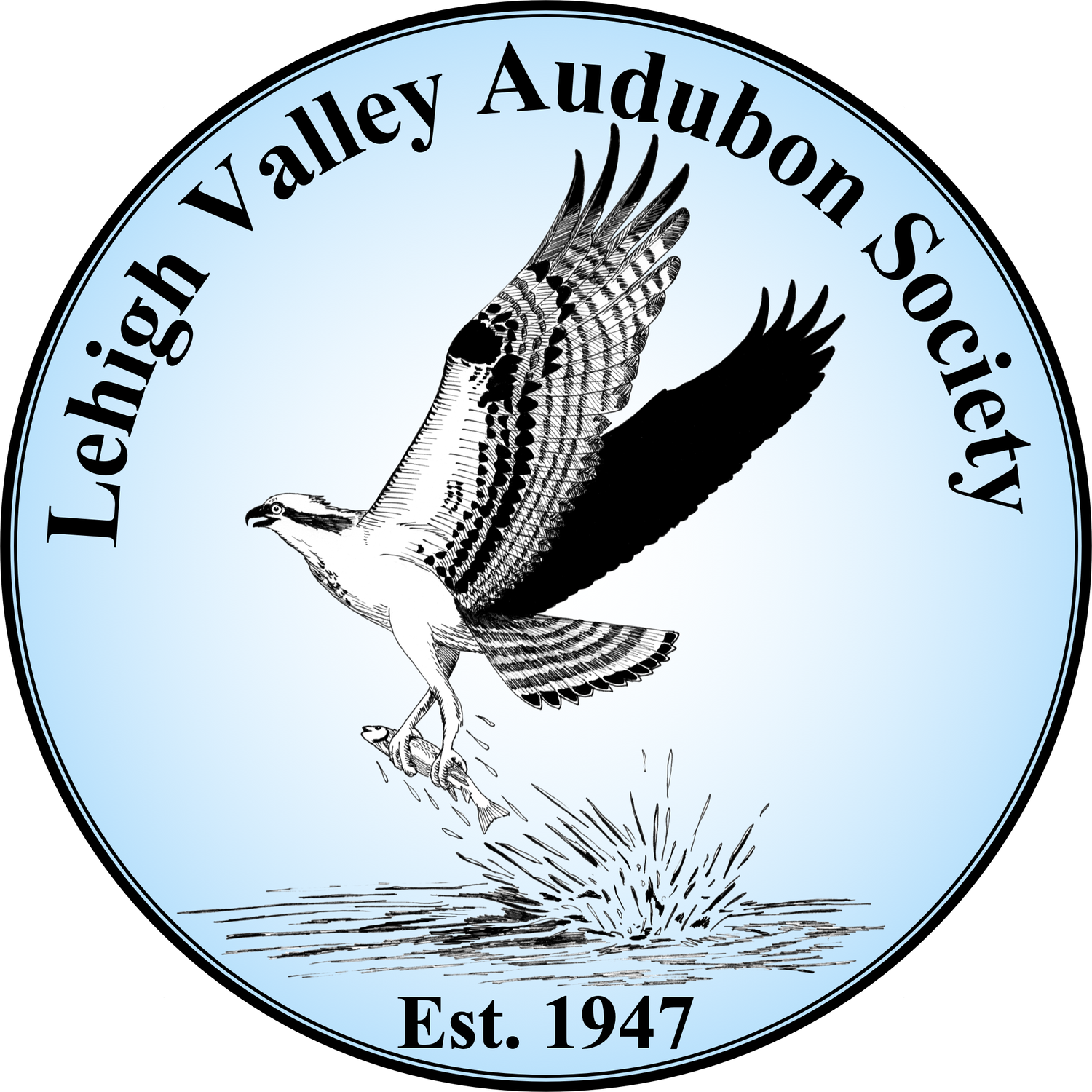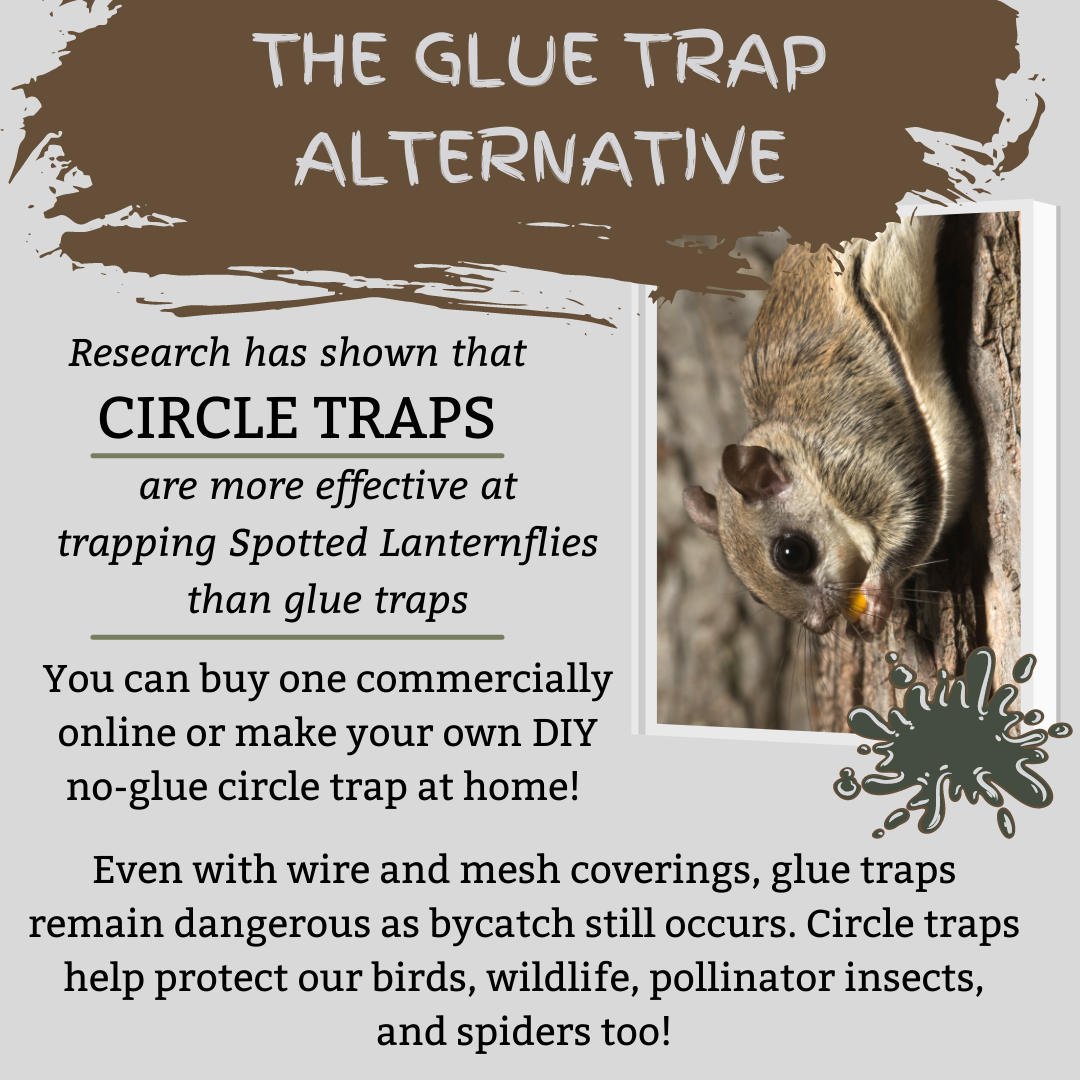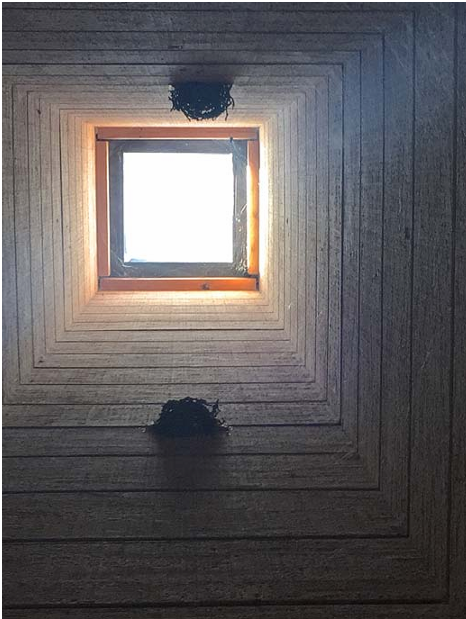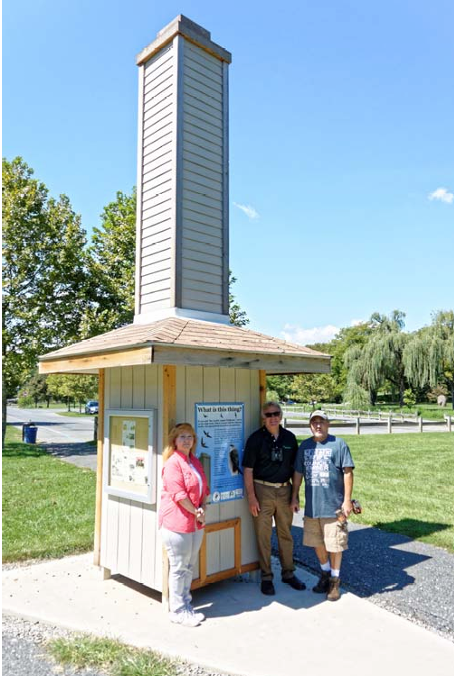Jennie Gilrain
Originally Published in April - June 2021 Quarterly Newsletter of The Lehigh Valley Audubon Society
This is the story of how a community came together to protect a species by saving its urban habitat.
Every spring in late April-early May, I anticipate the return of the Chimney Swifts. Somehow the sky seems dead without them. They bring sound and movement to the air we breathe. High above the trees of my urban backyard, they play and flirt in two’s and three’s, performing tandem feats of daring, and my heart soars.
Paying Attention
This summer, my husband and I decided to look for their nighttime homes. In July of 2020, we stumbled upon a large roost at the Masonic Temple, 202 Wyandotte Street in our South Bethlehem neighborhood. This chimney was 45 feet high and 5 feet square.
Swifts at Masonic Temple of Bethlehem Pennsylvania by Peter Saenger
In August of 2020, we frequently brought family and friends to watch these spectacular aerial acrobats. We wanted others to experience the sense of awe and joy inspired by their beauty. Every evening at dusk the birds gathered, flying in large circles around the chimney. The flight pattern morphed into a figure eight, then back to a swirling tornado. Finally, they began pouring into the mouth of the chimney like a bag of sunflower seeds into a birdfeeder. On August 23rd, we estimated 2,200 birds entering the Masonic Temple chimney.
The number of birds diminished gradually throughout the month of September from 2,000 to 1,000, 500, 250, until only a few stragglers remained. Then in October they were gone, on their way to South America-- Peru, Brazil and Bolivia. The skies over Bethlehem seemed suddenly silent and empty above the river and rooftops.
Danger Afoot
Walking through the neighborhood on November 21, 2020, I was shocked to find a chain link fence surrounding the Masonic Temple property. Construction signs warned passersby to keep out. “Warning: Construction Area, Hard Hat Required, High Visibility Vest, Safety Shoes.” For years, we heard rumors of redevelopment and demolition, but had no idea it was about to begin! I suddenly panicked, imagining a “silent spring” (Rachel Carson) in South Bethlehem. My love and passion for these birds inspired a call to action. I asked Christine Ussler, architect for the redevelopment project to ask the developer to consider the birds. I alerted the Lehigh Valley Audubon Society (LVAS), Bethlehem City Council, Bethlehem Environmental Advisory Council (EAC), Bethlehem Director of Community and Economic Development, and Lehigh University South Side Initiative to the potential destruction of habitat.
A New Hope
On December 8, 2020, I got a phone call from John Noble, the Masonic Temple/ Wilbur Mansion property owner and developer. I was surprised to learn that John and his family loved wild animals and nature. John wanted to know more about the birds. Amazing!
John Noble property owner and developer has agreed to “Save Our Swifts”
Photo by Peter Saenger and Jennie Gilrain
On December 11, 2020, at 9:00 am, LVAS Habitat Committee Chair and Chimney Swift expert, Scott Burnet met with Developer, John Noble, at the Masonic Temple to consult about the possibility of preserving the existing chimney or building a replacement tower on the property about 60 feet North of the original. John’s wife, Lynn, and daughter, Cassie, construction manager, were also present, as was architect Christine Ussler.
On December 14, 2020, we convened a meeting of concerned citizens via Zoom to discuss ways to support the effort to preserve or relocate the Masonic Temple roost. Attendees included Bethlehem Director of Community and Economic Development, Bethlehem EAC President and members, Sierra Club Lehigh Valley Chair and members, LVAS President, Lehigh University South Side Initiative Director, and Developer John Noble and family. LVAS President, Peter Saenger pointed out how unusual and commendable it was for a developer to change course at great financial expense for the sake of protecting wildlife. The community decided to work together to support John Noble in his commitment to save the swifts by saving or replacing the Masonic Temple roost.
On December 19, 2020, Ed Gallagher, wrote his first blog post about the swifts as The Bethlehem Gadfly. And we’re off! The Gadfly kept the public informed and entertained, as well as attracting the attention of other journalists from newspapers and television, including Bo Koltnow of Channel 69, The Morning Call, The Bethlehem Press, Fig Magazine and NBC News in Philadelphia.
On December 23, 2020, John Noble met his friend and engineer, Ron Carr of D’Huy Engineering at the Masonic Temple to examine the chimney. They drilled into the side of the structure to discover its walls were three bricks thick and lined internally with terra-cotta tiles. Together the two friends determined that it was possible to save the existing structure. They viewed the effort as an exciting challenge rather than an impossible problem. This was good news, as the birds are much more likely to return to an existing roost than discover a replacement.
On December 30, 2020, the Lehigh Valley Audubon Society created the Save Our Swifts Go Fund Me Charity to raise funds to support the preservation or relocation of the Masonic Temple roost.
On January 5, 2020, I spoke at the Bethlehem City Council Meeting to propose naming Chimney Swift the Bird of Bethlehem, citing reasons of economic impact, historic significance, wildlife protection, and health and safety. Councilwoman Olga Negron took the reins and began drafting a Resolution.
On January 15, 2020, the Bethlehem Environmental Advisory Council wrote a letter of support for the effort to save the Chimney Swifts, to preserve the Masonic Temple chimney and to name the Chimney Swift the city’s official bird.
On January 22, 2021, fifteen Freemansburg Elementary School fourth grade students wrote letters to the Bethlehem City Council asking them to name the Chimney Swift the official bird of Bethlehem.
On January 25, 2021, the Lehigh Valley Engaged Humanities Consortium (LVEHC) funded a joint proposal of LVAS, Bethlehem Area Public Library (BAPL) and Lehigh University South Side Initiative to present a series of forums designed to engage the public in considering the plight of the Chimney Swifts and their threatened urban habitat. Our title: S.O.S. Save Our Swifts by Saving their Urban Habitat: Telling the Story of the Chimney Swifts and their Connection to Our City.
On February 2, 2021, the Bethlehem City Council voted unanimously, 7- 0, to adopt Resolution 10D: “Now therefore, be it resolved by the Council of the City of Bethlehem that in recognition of the special value of this bird species to our city the Chimney Swift is hereby designated the Official Bird of the City of Bethlehem. The resolution is sponsored by Ms. Negron and Mr. Reynolds.”
On February 17, 2021, the first LVEHC Public Event, “Chimney Swifts and their Adaptation to Urban Habitats,” hosted by BAPL on YouTube, featured a slide presentation by LVAS President Peter Saenger with an engaged live audience.
On February 26, 2021, Lehigh University English professor and Director of the South Side Initiative, Mary Foltz, and Environmental Initiative professors, Karen Beck-Pooley and Breena Holland met to discuss ways to engage Lehigh students in the effort to protect Chimney Swifts and their urban habitat.
On March 11 and April 21, 2021, the second and third S.O.S. Save Our Swifts Public Forum Events will focus on changing building practices, the effect on urban habitat of Chimney Swifts, and the potential for cooperation between development and conservation.
Currently, the Masonic Temple chimney stands alone, while the building has been completely demolished around it. John Noble plans to restore and reinforce the structure to make it safe. Mr. Noble also hopes to connect his Event Center to the chimney with a space dedicated to educating the public about Chimney Swifts.
Thank you
So much is possible when we engage the collective imagination of a community, when we listen to one another: children and adults, developers and conservationists, politicians and professors. Passion and dedication are paramount: John and Lynn Noble, Scott Burnet and Peter Saenger, Mary Foltz and Olga Negron, Ed Gallagher and Bo Koltnow, and so many others played key roles in this unfolding effort to save a species. Perhaps this marriage of conservation and development will inspire others to consider the birds. Our dreams take flight.
Links for More Information
https://www.bapl.org/saveourswifts/
Save Our Swifts: The Role of Chimneys in Swift Habitats - Southsider










